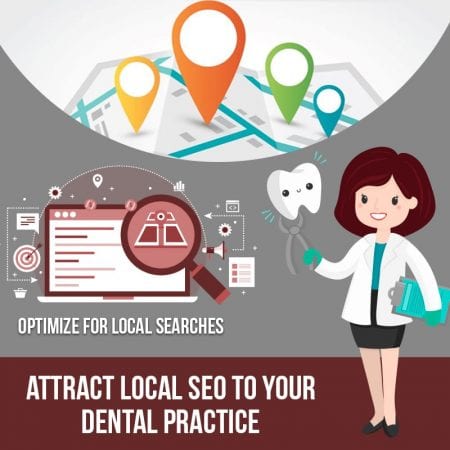 If you own and operate your own dental practice, or if you are the person responsible for attracting online traffic to a dental practice, then you’re going to want to account for the difference between search engine optimization (SEO) as you might traditionally think of it and local SEO.
If you own and operate your own dental practice, or if you are the person responsible for attracting online traffic to a dental practice, then you’re going to want to account for the difference between search engine optimization (SEO) as you might traditionally think of it and local SEO.
The difference is simple to understand, but it is, perhaps, more challenging to put into practice. The critical thing to keep in mind is that you are mostly trying to attract attention to your dental practice from people who live close to where your practice is located. Sure, it’s a bonus to be visible to people who might be planning to travel from out of town, but rarely- if ever- are patients willing to drive out of their way to have their teeth cleaned, and in the case of more acute needs- say, a chipped tooth or a cavity- prospective patients are going to seek out the practice closest to them.
Local SEO, on in this case dental SEO, is all about finding ways to show up on searches made by prospective patients who are close to your practice. That’s it. So, how can you make sure that you are using the best SEO strategies to achieve this goal? Here’s an overview.
Optimize for Local Searches
Many times, whether we have a toothache or we’re overdue for a cleaning, we end up searching for information that will tell us something about, say, possible reasons for a toothache, or how long we can wait before we should have our teeth cleaned again. The democratization of information, in general, has made an abundance of specialized information available to the layman. Self-diagnoses are popular these days, and preliminary internet searches tend to be for the purpose of determining whether or not we need medical attention in the first place.
What dental SEO is all about is making sure that information about your dental practice is available to people who have made their searches more specific. For example, a person who has made the decision to seek out a dental practice probably knows to make his or her search specific to where he or she lives. So, the most common local searches include the words “near me.”
Once a search engine recognizes that a person is looking for dental practices close to them, it will provide three places where a person can receive care. These results are often beneficial since a map to each location accompanies them. If you want to attract prospective patients to your dental practice, you must make sure to optimize local SEO.
How It Works
Every time a search is made through a search engine, the search engine sends out “spiders” to attach themselves to a bunch of websites that might fulfill the searcher’s query. These sites get ranked, according to how well they’ve been optimized, by the search engine and the “best” results show up at the top of the page. Boom.
Someone doing a local search is going to get a list of sites that were organized based on how well those sites were optimized to attract search engine “spiders.” The way to optimize your dental SEO is to make sure your dental practice’s name, address, and phone number are visible to those “spiders.” The more your practice is mentioned in reviews, business listings, directories, etc., the higher you’ll rank on search engines.
In Practice
If you want to check how well your dental practice ranks, complete a local search. If you’re not ranking, reach out to Local SEO Tampa Company for additional tips and strategies.
